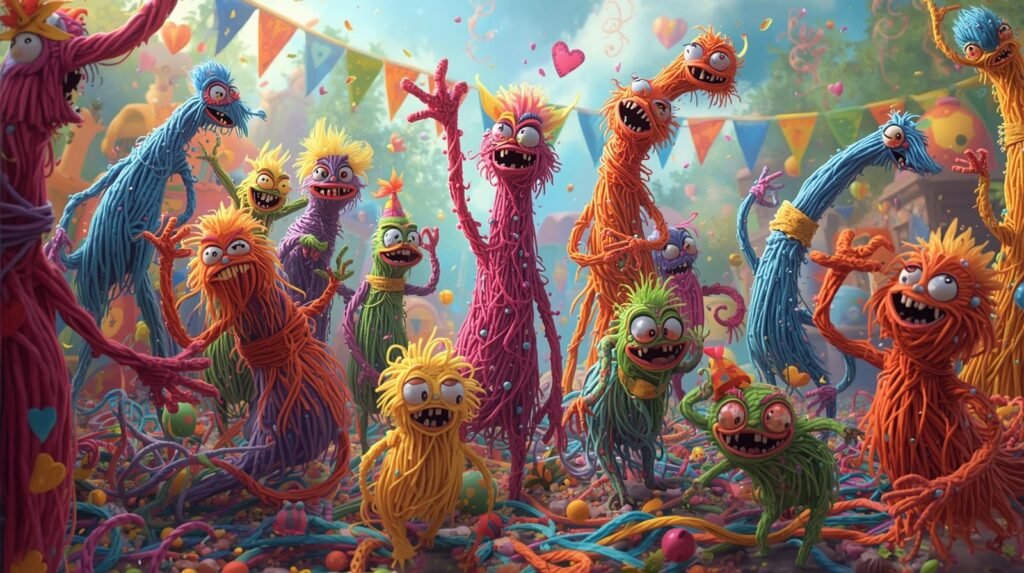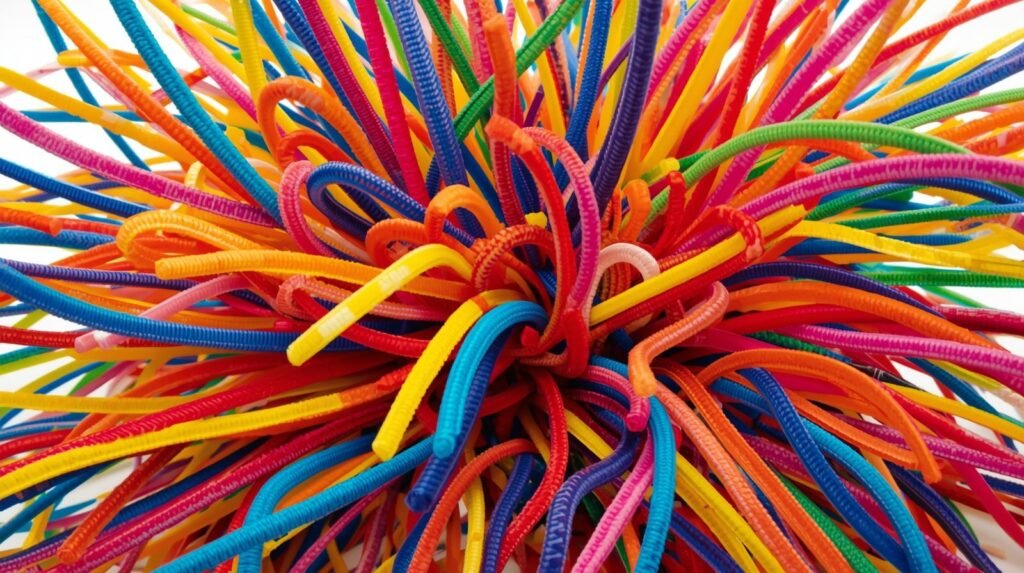Introduction: The Problem of Vanishing Creativity
In today’s digital-driven world, people—especially children and teenagers—are spending more time in front of screens than ever before. This overexposure to technology has reduced hands-on creativity, personal crafting skills, and imagination. Traditional hobbies like scoubidous, once a favorite among kids and artists, started disappearing from schools and households. The question is: what happened to this simple yet fascinating craft that once defined the joy of creativity?
Scoubidous, also known as boondoggle or gimp, is the art of braiding and knotting colorful plastic laces into various decorative items such as keychains, bracelets, and charms. It’s not just a pastime; it’s an artistic expression that blends color, texture, and patience into something tangible and joyful. After years of being forgotten, scoubidous are now experiencing a revival—especially in 2025—as more people rediscover the therapeutic power of making something by hand.
What Are Scoubidous?
Scoubidous are strands of brightly colored plastic laces that can be twisted, knotted, or braided to create unique patterns and designs. The word “scoubidou” originates from France in the 1950s, when this craft first became a popular trend among children. It was originally inspired by a French song called Scoubidou by Sacha Distel, which later became synonymous with the playful art of weaving plastic cords.
These laces are typically made of PVC and come in a wide range of colors—neon, metallic, pastel, or transparent—allowing crafters to express their creativity freely. From keychains and bracelets to intricate sculptures, the possibilities with scoubidous are nearly endless.
A Short History of Scoubidous
The history of scoubidous dates back to post-war Europe, when children started experimenting with leftover materials from manufacturing industries. The colorful plastic cords were easy to shape and durable, making them ideal for crafting. During the 1950s and 60s, scoubidous became a global craze, spreading from France to the UK, the US, and beyond.

In the early 2000s, scoubidous made a brief comeback among young students through craft workshops and summer camps. But the digital age soon took over, and children shifted to mobile games and online entertainment, causing hands-on crafts like scoubidous to fade into the background.
Now, in 2025, with the rise of social media DIY trends, scoubidous are once again finding their place among creative communities on TikTok, Instagram, and YouTube.
The Modern Scoubidous Craze
What makes scoubidous relevant today is the shift toward mindful creativity. People are realizing the importance of disconnecting from screens and engaging in physical, calming activities. Making scoubidous offers just that—a hands-on, relaxing, and rewarding craft that relieves stress while improving focus.
Influencers and artists are bringing the trend back by posting tutorials, colorful designs, and scoubidou challenges online. Craft stores are also seeing a rise in demand for scoubidou kits that include multiple cords, beads, and tools. Schools and summer camps are reintroducing the activity to help kids learn patience, coordination, and color theory through fun crafting.
Why Scoubidous Are Gaining Popularity Again
- Stress Relief: Crafting with scoubidous provides a soothing break from digital devices.
- Affordable Hobby: It’s inexpensive and easy to start, needing only plastic laces and creativity.
- Social Media Trend: Viral crafting videos are inspiring millions to try it.
- Educational Value: It helps children develop motor skills and creativity.
- Sustainability Factor: Many brands now make eco-friendly, biodegradable cords, appealing to environmentally conscious users.
The Problem: Lack of Creative Outlets
Many young people today lack access to physical hobbies. Schools focus heavily on academics while neglecting art and creativity. This imbalance leads to reduced innovation and higher stress levels. Scoubidous provide a simple, affordable, and engaging solution to this problem. They encourage creativity, teamwork, and patience—all through an activity that anyone can enjoy.
The Solution: Rediscovering the Joy of Hands-On Craft
The revival of scoubidous offers a great solution to the creativity gap. It allows people of all ages to disconnect from screens, engage in mindful art, and create something personal. Unlike digital activities, scoubidous provide a tangible sense of accomplishment. When someone completes a braided bracelet or colorful keychain, it reflects patience, focus, and artistic vision.

Parents are also using scoubidous as a way to bond with their kids. Crafting together not only strengthens family connections but also enhances problem-solving and hand-eye coordination skills in children.
How to Get Started with Scoubidous
Getting started with scoubidous is easy and fun. All you need are some colorful plastic laces, scissors, and a little time. Beginners can start with simple square or round braids and gradually move toward more advanced knotting patterns. Many online platforms like YouTube and Pinterest now offer step-by-step guides and pattern tutorials to help you learn.
You can also buy complete Scoubidou Starter Kits online that come with cords, beads, and instructions for creating bracelets, keychains, or even miniature figures.
Scoubidous in Schools and Therapy
In educational settings, teachers are reintroducing scoubidous as a form of art therapy. Studies show that crafting can reduce anxiety, improve mood, and develop cognitive skills. Students with ADHD or autism often find tactile crafts like scoubidous calming and engaging. The repetitive nature of braiding helps with concentration and motor control while offering a non-digital creative outlet.
Future of Scoubidous in 2025 and Beyond
As the world shifts toward sustainable creativity, scoubidous are evolving too. Eco-friendly materials, biodegradable plastic, and digital design integration are giving this vintage craft a modern identity. Brands are even launching “smart scoubidous” that light up or react to UV light, blending technology and art in a fun way.

Craft festivals, art fairs, and school programs are bringing back the joy of scoubidous across countries. The trend isn’t just nostalgic—it’s a movement toward mindful, sustainable creativity.
Conclusion
Scoubidous represent more than just braided plastic strings—they symbolize imagination, focus, and the joy of creation. In a fast-paced, screen-saturated world, they remind us of the importance of slowing down, using our hands, and creating something beautiful from scratch. The 2025 comeback of scoubidous shows that even the simplest crafts can have lasting impact when they inspire creativity and connection.
FAQs
Q1: What are scoubidous made of?
Scoubidous are usually made of PVC plastic cords, though modern versions use eco-friendly materials.
Q2: Are scoubidous safe for kids?
Yes, they are safe for kids when used under supervision. The activity also promotes hand-eye coordination and creativity.
Q3: How can I start making scoubidous at home?
You just need colored plastic laces and basic knotting guides. You can find easy tutorials on YouTube or craft websites.
Q4: Are scoubidous still popular today?
Yes, scoubidous have made a major comeback in 2025, especially through social media trends and DIY communities.
Read Full Story: Article Link


